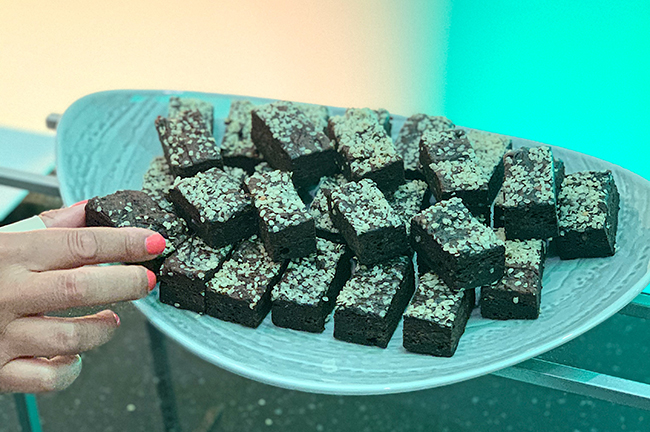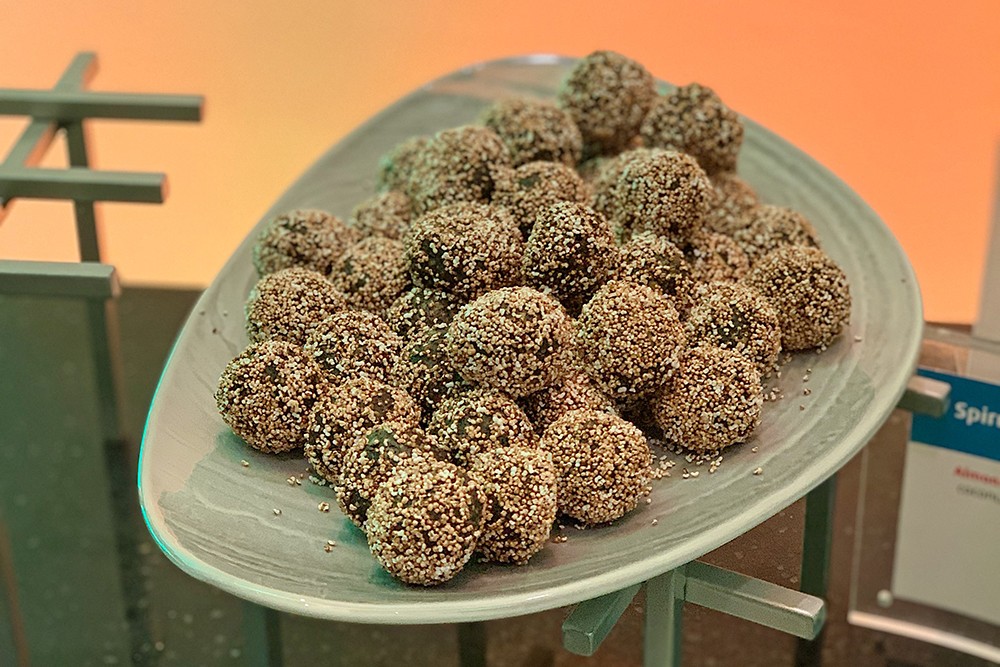Food and beverage trends are always changing, but significant shifts in how people approach food are influencing the menus of tomorrow, according to the panel of F&B experts at IACC’s Meeting Room of the Future showcase at MPI’s 2019 World Education Congress (WEC) in Toronto, Canada.
Expert F&B panelists included:
- Patrick Berwald, vice president of food and beverage at Benchmark;
- Murray Hall, executive chef at Bank of Montreal Conference Center;
- and Mariela Mcllwraith, director of industry advancement for the Event Industry Council (EIC).
The three panelists dished on the foods and ingredients they think will influence the menus of future events over the next few years.
Health and well-being combined with sustainability and the impact of food on the environment are all major factors in how people around the globe are making food choices. This will directly affect how meeting planners will approach food selection for events, according to the panelists. Here are some of the ingredients they predict are the next big trends in F&B.
9 Foods and Ingredients to Consider for Your Next Event
1. Nutritional Yeast
Nutritional yeast is dairy free and often gluten free, making it an easy ingredient to help accommodate dietary needs at events, according to Hall.
The main benefit, he said, is that it’s high in protein. Finding suitable protein replacements can be a challenge for attendees on vegan diets.
“There are only so many beans you can eat,” Hall said.
“I’m always thinking, ‘How can I build flavor and proteins?’” he added.
2. Ghee
Ghee is common in Indian cuisine and is often used in place of regular butter, according to Berwald. Though its source is cow’s milk, the milk solids are removed.
This means ghee contains less lactose than butter, making it an ideal substitute for lactose-sensitive or -intolerant attendees. It also promotes gastro health.
3. Spirulina
Mcllwraith introduced spirulina, which prompted some raised eyebrows in the audience at first mention. The benefits, she explained, are both dietary and environmental.
Spirulina is a type of algae and is high in protein and other vitamins and minerals. It also absorbs carbon dioxide. Because of this, Mcllwraith deemed it the ingredient that’s the “team captain for fighting climate change.”
4. Cricket Flour
Is cricket flour what it sounds like? Yes, according to Berwald. It’s 65% crickets, but tastes mild and nutty—once you get past the mental block of eating insects.
Cricket flour is actually a good source of protein and a sustainable product. Berwald said that it doesn’t require as much water to get the same amount of quality protein as meat products.
5. Impossible Burger
“Plant-based proteins are a responsible approach,” Mcllwraith said.
“Impossible burgers have a similar flavor to burgers, but the carbon footprint [required to make them] is dramatically different,” she added.
People seemed to agree—almost too enthusiastically. One planner at the showcase expressed concern over the recent reports of the Impossible Burger shortage, but McIllwraith is hopeful that its mainstream success will mean that supply will catch up with demand.
6. Amaranth Seeds
Hall said that two tablespoons of amaranth seeds yields 10 grams of protein and can be used in a variety of dishes popular at events like salads, energy balls and more.
7. Edible Plants
As the climate changes, the uncertainty of what crops will thrive on our planet grows, which is why Mcllwraith predicts that incorporating a variety of edible plants—beyond corn and potatoes—will become common at events.
“The power of events is not only feeding people, but educating people,” she said, challenging planners to try a new edible plant at their next event.
“Stand up for biodiversity and try something new,” she added.

Adzuki Bean Brownies, Credit: Danielle LeBreck
8. Hulled Hemp Seeds
Sprinkling hulled hemp seeds on top of salads, dessert bars, yogurts and more is an easy way to add protein, omega 3s and healthy fats into these popular event dishes, Hall said. Hemp seeds are from the cannabis family, but they are non-psychoactive.
9. Brands That Give Back
Berwald concluded saying that “snacktavists” are already popular, and “brands that give back” will continue to be an attractive food choice for events. Brands that give back are products that support worthy causes, like This Saves Lives bars, for example. They are highly regulated, so planners can confidently promote these products and their stories to attendees.
Are Meeting Professionals Buying Into These New Food Trends?
At the end of the education session, attendees participated in polls to identify trends that they’d be most willing to implement into their event menus. Popular choices included the Impossible Burger, spirulina and amaranth seeds. But the winner? Brands that give back.
Easy to source and a guaranteed way to promote thoughtfulness in the food selection process, most planners in the room agreed that the brands that give back trend is the easiest one to implement right now. It also doesn't require attendees to branch out of their comfort zones.
“There’s a wellness factor to them, but these brands go over and above,” Berwald said. “They tell a story.”
Other foods and ingredients mentioned as part of the panel were attractive to planners, but the cost and availability of some of these foods were a concern.
The panelists were optimistic that this would change as they become more mainstream.
[Read This Next: 10 Crucial Meetings Food and Beverage Trends]







